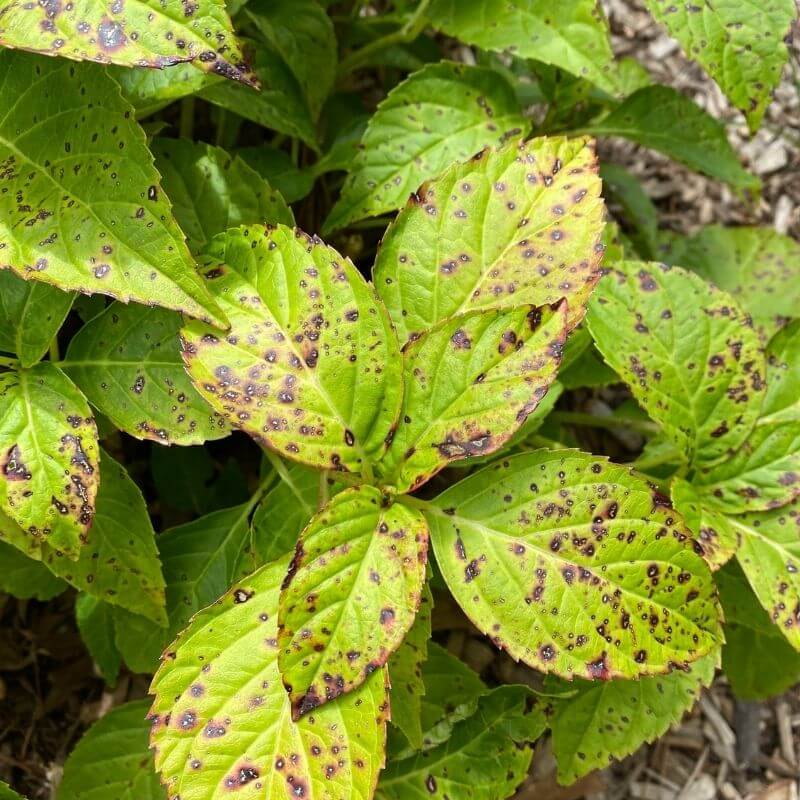Fascination About Hydrangea Leaves Turning Yellow
Wiki Article
Fascination About Hydrangea Leaves Turning Yellow
Table of ContentsThe 5-Second Trick For Hydrangea Leaves Turning YellowExcitement About Hydrangea Leaves Turning YellowSome Ideas on Hydrangea Leaves Turning Yellow You Need To Know4 Easy Facts About Hydrangea Leaves Turning Yellow ExplainedSome Ideas on Hydrangea Leaves Turning Yellow You Should KnowThe Only Guide for Hydrangea Leaves Turning Yellow
You can try to avoid fungal conditions by keeping your gardens neat and devoid of particles. Offer your gardens an excellent loss and spring tidy up and eliminate all leaf litter from the ground, as well as from within the crown of the plant. These fallen leaves that will linger, waiting to attack in the next expanding period.These can be discovered at garden centers. Remember to comply with the instructions on the tag of the fungicide you buy. Copper fungicides are, but if they are overused they can become harmful to your plant. Removing contaminated leaves is also a wonderful action. Clip the fallen leaves, and eliminate them from the yard.
If they aren't obtaining sufficient water, their leaves will brown. Hydrangeas have a in the lunchtime sunlight, and bouncing back once the sunlight has shifted and the plants have some time to recoup.

Hydrangea Leaves Turning Yellow Fundamentals Explained
Developed plants might need to be sprinkled one to three times per week, depending on your conditions. It might appear alluring to spray the fallen leaves down.Water the base of the plant,. When the plant has actually rebounded, you can return to a normal watering routine.
The container must be huge enough so the plant can grow and obtain all of the water and nutrients it needs. Panicles love the complete sunlight.
So, no matter of the variety, strategy ahead and make sure your plant has a lot of defense from the wind. You have a few options here. You could transplant to a new location, or you could develop a wind obstacle making use of another plant, or fencing. To create a wind barrier you could, or a hedge to obstruct the wind.
Indicators on Hydrangea Leaves Turning Yellow You Should Know
Ornamental yard, Rose of Sharon, or Holly bushes are just a few concepts of plants you can make use of to block the wind. If you require to transplant, locate a place in your garden that is well safeguarded from sun and wind. Transplanting is best carried out in the autumn or the springtime.The plants area is the most vital aspect when it comes to getting established and appropriate growth. With a little planning on growing area and proper upkeep, you'll be able to guarantee your hydrangeas!.
So, if Hydrangea leaves turn yellow and diminishes later on, it's generally as a result of overwatering, as the plant can not uptake water and loses the leaves to remove transpiration. Following this, Hydrangea leaves begin to sag and wilt. Considering that both problems can develop yellow fallen leaves, you must find the distinction in site between the overwatered and underwatered plant.
You can save the plant from yellow leaves by using it the right light and placement. If your plant gets yellow fallen leaves, relocate to a dark area. Area Hydrangea plants indoors near an east-facing home window. Dapple the plant with curtains or UV security sheets to obstruct direct heat.
Fascination About Hydrangea Leaves Turning Yellow
Remember, Hydrangeas are only frost forgiving in loss and wintertime as they go dormant, and temperature alterations can cause yellowing fallen leaves and brown areas. If it gets as well warm, the edges of the leaves become yellow, turn brownish and establish a crispy structure. Relocate your potted Hydrangeas away from drafty north-facing windows in the winter months.Heavy dirt can quickly block the oxygen supply to the roots and sever the link with the upper parts of the plant (fallen leaves). Hydrangea leaves transform their shade if they locate small inconveniences in the soil composition. This issue can cause the Hydrangea entrusts to turn yellow, experience leaf declines, and make a sagging plant in sync with overwatering.
But, yellow leaves in Hydrangeas are the first indications of illness problem, usually followed by black spots, browning, drops, and wilting. Separate the infected or pest-infested plant from the healthy plants to avoid illness spread. If it is a garden plant, remove all the infected leaves using sterilized devices and cleanse up all the particles.
Cutting off aids Hydrangea color unnecessary weight and protection, permitting the growth of new leaves. The very best time to prune Hydrangeas is spring when the plant is prepared to sprout foliage for the following season. Inspect for spent or infected leaves and cut the base of a stalk that signs up with the leaves and stem.
A Biased View of Hydrangea Leaves Turning Yellow
Avoid cutting healthy and balanced or eco-friendly leaves, and do not remove greater than 25% of the plant's vegetation. Accumulate the thrown out delegates burn or compost them. The main factor behind the red fallen leaves in Hydrangea is poor dirt or environmental problems. If Hydrangea fallen leaves have a white fine-grained substance on them, it implies Powdery Mold infection.Additionally, repot the plant every year in spring or every 2 years if the growth price is sluggish.
There are 6 primary reasons why this could happen:: The plant does not obtain sufficient sunlight.: The origins are either too damp or as well dry.: The plant is also cold.: The soil is not acidic or alkaline enough for the hydrangea.: The plant isn't getting the ideal nutrients it needs to stay healthy and balanced.
Each reason affects the plant in such a way that can be repaired if we recognize how to take site care of hydrangeas the proper way. When we discuss poor light for hydrangeas, we indicate that the plant isn't getting adequate sunlight. Hydrangeas like bright light, however not direct, scorching sunlight. They often flourish best with morning sun and mid-day shade.
The Single Strategy To Use For Hydrangea Leaves Turning Yellow
Without adequate sunlight, the fallen leaves can turn yellow, the plant can come to be weak, and it may generate less blossoms. To guarantee a hydrangea receives appropriate anonymous light, it needs to be positioned in a spot where it can delight in the morning light and be secured from the extreme mid-day sun. Hydrangea Leaves Turning Yellow. Overwatering is when a hydrangea plant gets more water than it requires
This problem prevails in the loss as the climate changes or if a hydrangea is planted in an area where it doesn't obtain adequate heat from the sunlight. It is necessary to recognize the appropriate problems for hydrangeas to stay clear of low-temperature stress. A lot of hydrangeas expand best in areas 6 to 9, where the environment is milder.

Report this wiki page